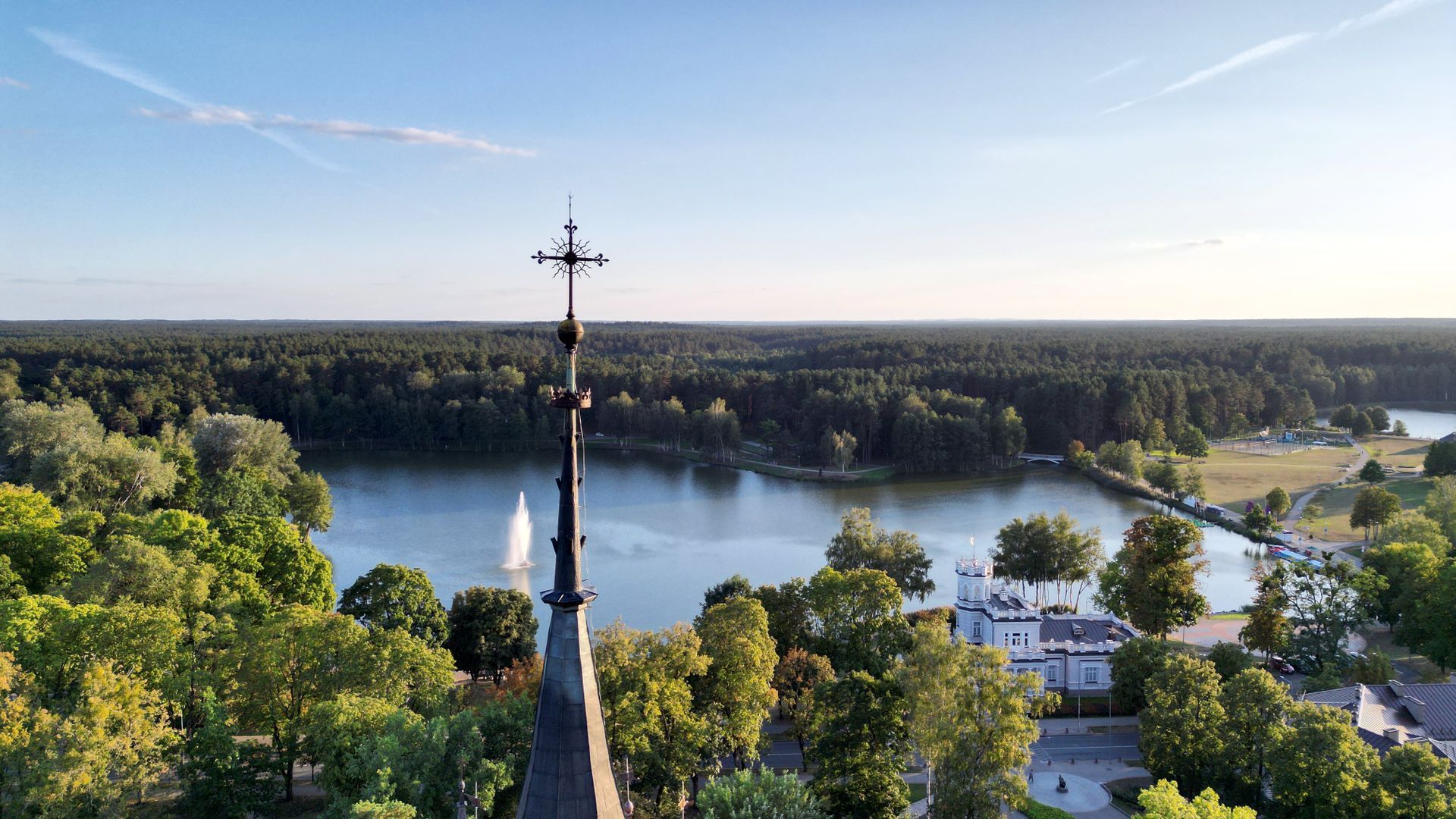
4.0
6 rates
5
4
3
2
1
6 rates
4.0
Druskininkai Church of Saint Mary‘s Scapular
24
Photo
© trip.lt
24
12 people was here
0 reviews
Architecture professionals describe the only one Catholic church in Druskininkai as neo gothic style place of worshipping, although many visitors think that it slightly reminds of a castle of childhood tales. Especially so if you look at it from Druskonis Lake south-east shore: from a spot here, you can see the white villa "Linksma" in the foreground and farther on – delicate tower spires, adorning the Church of Saint Mary’s Scapular.
The yard of this Church has not been surrounded by a fence; therefore, the Church naturally has become part of everyday life of Druskininkai. This can be proved by various paths scattered across the neighbourhood of the Church and areas with collection of benches inviting to take a rest. Just around the corner, visitors can see here the main promenade Vilniaus Alley, as well as many hotels, Druskininkai Town Museum and apartment blocks of Soviet times.
This spacious Church was completed in 1931, the architect – Stefan Szyller, a Pole. His project was finished much earlier, as construction works had been launched even in 1912. Interestingly, the new Church construction started before demolishing the old smaller one that had occupied the same area and had been built in the mid-19th century. The old Church stood inside the new one during masonry works on the new Church walls. The walls of the old Church used to hear organ music played by Konstantinas Čiurlionis, the father of Mikalojus Konstantinas Čiurlionis. People remember that there were times when the son, a man of genius, was a substitute for the father.
Historians know that this Church was a place frequently visited by famous people, such as the First Marshal of Poland Josef Pilsudski, the author Vincas Mykolaitis-Putinas, the linguist Juozas Balčikonis and great number of other prominent personalities of Lithuania, well known for their works in art and science.
The interior of the Church is adorned by a great number of valuable works of art, including the statue, made by Antanas Česnulis, one of the prominent woodcarving craftsmen in Lithuania, – "The Pensive Christ".
© Lietuvos kurortai
Loading...
Loading...
©2025 trip.lt

